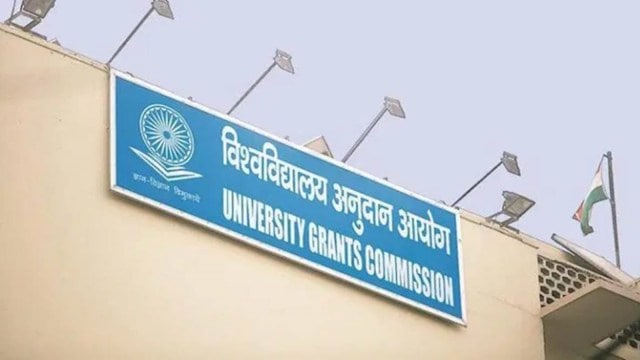
What should an undergraduate Mathematics degree achieve in our time of climate risk, data deluge, and fast automation? It should inculcate clear reasoning, connect abstraction with the world, and help graduates solve unfamiliar problems. The UGC’s Learning Outcomes-based Curriculum Framework (LOCF) for Mathematics aims at that balance. Some critics say the Maths LOCF centralises control, sidelines the core, or smuggles ideology into the classrooms. They single out references to Indian Knowledge Systems, casting the draft as antiquarian and light on rigour while overlooking international practice that links local knowledge with modern science. The charge does not stand up when tested against the text and intent of the maths LOCF.
The LOCF model defines learning outcomes and invites higher education institutions (HEIs) to design sequences. The UGC’s public notice states that the draft “will serve as a model curriculum to promote flexibility and innovation in programme design and syllabi development”. The UGC has clarified that outcome-based models do not seek a national common syllabus. NEP 2020 lists as a core principle “a pride in India, and its rich, diverse, ancient and modern culture and knowledge systems and traditions”. That vision asks HEIs to blend Indian ethos with modern standards.
A learning-outcomes approach does not replace an HEI’s responsibility to teach core Mathematics well. It sets what graduates should be able to do: Reason with proof, model with precision, compute effectively, communicate Mathematics and connect it to society. Nothing in the framework prevents giving attention to calculus and linear algebra, real and complex analysis, algebra through group and ring theory, probability and statistics with modern inference, numerical methods, and electives in optimisation, graph theory, or machine learning. Analytical geometry and mechanics are essential in spatial reasoning and continuum models used in robotics, geospatial work, and structural design.
The Maths LOCF prepares graduates for MSc, UGC-NET, PhD, and industry through a sequenced core. Far from squandering the opportunity, the approach embeds application, practice, math labs using Python, R, or MATLAB with code notebooks, mini-projects, and a viva. These habits are important for job roles in data analysis, optimisation for logistics, scientific programming, and actuarial work. Statistics appears as a complete core course and recurs through modelling and computation. Electives such as Mathematics in Music and Mathematics in Meditation come after core courses and flag any advanced ideas as intuitive. Isolated errors in a few references can be fixed through public consultation without invalidating the framework.
Contemporary Mathematics, paired with historical and civilisational literacy, trains comparative reasoning. Historians of Mathematics have shown that Madhava and his successors derived infinite series for sine, cosine, and arctangent several centuries before their European rediscovery. Kim Plofker, an American historian of Mathematics, has documented these techniques. Sceptics ask for independent corroboration. It exists. A vast literature traces the series results to Kerala texts such as the Tantrasangraha-vyakhya, a Sanskrit commentary on Tantrasangraha, the 1501 CE astronomy–Mathematics treatise and the Yukti-bhasha, a 16th-century Malayalam treatise on Mathematics and Astronomy. Studying proofs from a different idiom trains comparative thinking and strengthens conceptual grip.
A well-designed elective on kala ganana asks students to compute the diurnal motion of the Sun and stars, connect modular arithmetic to understand calendars, and estimate errors in observational astronomy. Media reports have focused on panchanga terminology. The framework’s deeper promise lies in the Mathematics that sits underneath.
Another line of criticism claims that LOCF amounts to centrally imposed syllabi. The record says otherwise. HEIs retain the freedom to design paths that reach them. That approach respects the diversity of India’s higher-education ecosystem. For those who worry about capacity, HEIs can use co-teaching with domain faculty, short faculty-development modules, and vetted reading lists.
Countries have already designed similar integrations. New Zealand has formally recognised Matauranga Maori, the body of Maori knowledge, practice, and worldview, in science and education policy. Australia’s national curriculum maps First Nations ideas to numbers, geometry, and statistics to ensure cultural and scientific integrity. In the US, the White House Office of Science and Technology Policy and the Council on Environmental Quality issued government-wide guidance for incorporating indigenous knowledge into federal research and decision-making. The University of Alaska Fairbanks’ “Math in a Cultural Context” programme works with Yup’ik elders to integrate indigenous measurement, symmetry, navigation, and proportional reasoning with formal Mathematics. These examples represent institutional learning about how multiple knowledge traditions can strengthen enquiry.
India’s contributions are globally recognised. Appreciating the decimal system’s depth and simplicity, Pierre-Simon Laplace, a leading mathematician and astronomer, wrote: “India gave us the ingenious method of expressing all numbers by means of 10 symbols.” Historians have traced trigonometric series and techniques of approximation to Indian texts that predate Isaac Newton and James Gregory. When students study how Mathematics developed in India and elsewhere, they understand that no region has a monopoly on insight.
When HEIs use the UGC’s LOCF to teach modern Mathematics well, and then ask students to test claims from classical sources with today’s tools, they create graduates who reason across traditions and time. Why oppose an inclusive maths LOCF that equips graduates to write proofs, analyse data, build models, and trace ideas from their origin to future use?
The writer is former chairman, UGC and former V-C, JNU. Views are personal